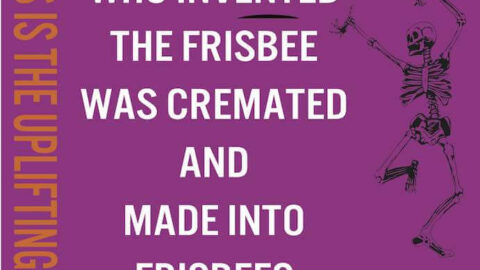This is the first installment of a two-part review series. Both reviews take a look at recent releases by two composer collectives: Ensemble Pamplemousse and Object Collection.
It’s uplifting to see the emergence of new composer collectives, particularly given a climate where funding and resources for new music ensembles is becoming more scarce by the day. There’s a spirit of community–of “we’re all in this together”–that’s refreshing and even empowering. Two collectives each recently released an album; Ensemble Pamplemousse’s …This is the Uplifting Part and Object Collection’s noise opera cheap&easy OCTOBER
Ensemble Pamplemousse’s …This is the Uplifting Part
Founded in 2003, Ensemble Pamplemousse (Natacha Diels, Andrew Greenwald, Jessie Marino, David Broome, Bryan Jacobs, and Weston Olencki) was created to “provide a focal point for like-minded creators with a thirst for sonic exploration.” This sonic exploration recently coalesced into an extraordinary video album titled …This is the Uplifting Part, a collection of compositions written and performed by Ensemble Pamplemousse.
The video album begins with Natacha Diels‘ Child of Chimera; a composition beginning with gentle, deceptive sways interwoven with spastic outbursts. The tough part about reviewing these compositions is that so much of the pieces are tied into the visual aspect (it’s a video album after all), so much of the piece needs to be directly experienced on the screen as well as the ears. Punctuated within jarring pitches and drum solos are moments of surprising tenderness; gentle piano, glockenspiel colors, and soft vocalizations. The contrasts are very jarring sometimes, but overall quite effective.

Bryan Jacobs‘ Organic Synthesis Vol. 1 is intense. Like, very intense; in both frequency (prevalent loud bird chirps and striking silences) and in execution. I can’t quite put my finger on it, but there is a weird and compelling tension that is sustained throughout its 10 minutes. It’s like someone who is smiling the same smile constantly, even when something horrible or tragic is happening around them. None of this is meant in a negative way; I was hooked throughout piece right from the get go, but in a way that I did not see coming at all. There’s a particularly beautiful moment about eight minutes in that really shook me, given everything that happens before it.
Up next was Jessie Marino‘s Guillaume De St. Cloud Suffers a Violent Dazzling. I should confess something up front; I’m endlessly fascinated by love for radio static. The white noise punctuated with faint signals is endlessly interesting for me, and to my surprise and delight, the piece opens with an abundance of beautiful static. Guillaume De St. Cloud Suffers a Violent Dazzling is probably the most art-film-like (for lack of a better term) of each of the videos; there is more variety in image than previous tracks, which is welcoming. Moments of serenity give way to intense passages of fast and slow images before sudden silence above slow panning shots of garbage and debris. Ominous, yet thrilling.
David Broome‘s Together Again. Again! diverges quite a bit from the other pieces in mood and style. Opening the track is a fun, 8-bit duet that winks at old Atari video games with a minimalist bent. The video editing is particularly on-point for this track; it seems to be the most intertwined with and reflective of the music happening. There is an abundance of great riffs and figures throughout the piece (as well as some awesome mouth whistle things), some cool harmonic shifts, and really great colors from the piano. My only critique would be that it felt like it was a bit longer than it needed to be, but that’s extremely minor.
Ensemble Pamplemousse: …This Is The Uplifting Part from Ensemble Pamplemousse on Vimeo.
The final track, Andrew Greenwald‘s A Thing is a Hole in a Thing It Is Not creaks, groans, and exhibits an incredibly wide range of colors, timbres, and raw string sounds. Most notably, it makes the most use of silence than any other piece on the album. Greenwald’s performances throughout the track are exceptional; he brings out incredibly nuanced and thoughtful sounds from a wide variety of sources.
This was the first video album I’ve reviewed, so treading this new ground with such a strong compilation such as this was a privilege. Each member of the group brings their own unique strengths, colors, talents, and voices to this compelling video album.
The next installment will be a review of Object Collection’s cheap&easy OCTOBER.
























